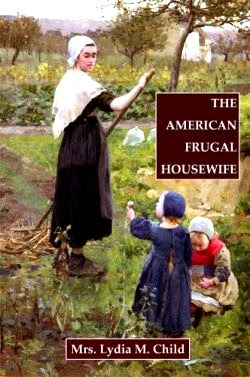Beans are a nutritious, fiber-rich, economical addition to our diets. Almost every culture in the world uses some kind of beans or legumes like peas and lentils in their cuisine. Lentils in the Middle East, peanuts in Africa, split peas in Northern Europe, red and black beans in central and South America, Navy and Great Northern Beans in America, and all of these in the melting pot of the United States. Dry beans store well and, as Grandma knew, are economical and tasty.
 You can buy
many of these beans canned, can them yourself, or cook them from the dried state. I have found that if I rinse any cooked or
canned beans, they freeze just fine. I
measure them out in recipe-size portions, like a cup or two, into plastic
freezer bags and freeze them flat. They
thaw quickly, ready to use. So if I have
a half a jar or can left, or I want to have some cooked ahead, I simply freeze
the leftovers (or planned overs).
You can buy
many of these beans canned, can them yourself, or cook them from the dried state. I have found that if I rinse any cooked or
canned beans, they freeze just fine. I
measure them out in recipe-size portions, like a cup or two, into plastic
freezer bags and freeze them flat. They
thaw quickly, ready to use. So if I have
a half a jar or can left, or I want to have some cooked ahead, I simply freeze
the leftovers (or planned overs). There are
two methods for soaking beans to make them cook more quickly. Four to six hours of soaking is plenty, but
they can be soaked overnight if that is convenient. Use 2 quarts of cold water for each pound of
beans. If you want to soak them even
quicker, cover with cold water, bring to a quick boil, simmer 2 minutes and let
set, covered, 1 hour. In both cases,
discard the soaking liquid if gassiness is a problem.
There are
two methods for soaking beans to make them cook more quickly. Four to six hours of soaking is plenty, but
they can be soaked overnight if that is convenient. Use 2 quarts of cold water for each pound of
beans. If you want to soak them even
quicker, cover with cold water, bring to a quick boil, simmer 2 minutes and let
set, covered, 1 hour. In both cases,
discard the soaking liquid if gassiness is a problem.
Remember
that salt and acid (like tomatoes) make beans tough. Add them when the beans are fully cooked.
I like split
peas and lentils for faster cooking – they usually don’t need any
presoaking. I’ve found, as a rule of thumb, that cooking or canning my own costs about 1/3 of what purchased plain canned beans cost.
Our pictured recipes are (Top to bottom: Sausage and Black Bean Soup, Ranch Style Stew, and Barley Lentil Soup. Or try canning your own - Homecanned Bean Soup.
Here’s a handy chart for cooking your own dried beans, dried peas and lentils that I use.
Here’s a handy chart for cooking your own dried beans, dried peas and lentils that I use.
Type
|
Cooking time
|
Yield in Cups per pound
|
Black-eyed peas, cow peas, mung beans
|
No soaking 45-60 minutes
|
7
|
Black beans, Turtle beans
|
1-1 ½ hours
|
6
|
Navy beans, pea beans, haricot beans, kidney beans (red or
white), Cannellini
|
1-1 ½ hours
|
7
|
Chick peas, Garbanzos,
|
1 ½-2 hours
|
6 ¼
|
Lentils
|
Don’t soak, 1-1 ½ hours
|
5
|
Lima beans
|
1-1 ¼ hour
|
6 ¼
|
Pink or Pinto beans
|
1 ¼-1 ¾ hours
|
6 ½
|
Red American beans
|
1 hour
|
6
|
Split Peas
|
Don’t soak, cook 30 minutes
|
6
|
Great Northern beans
|
1-1 ½ hours
|
6 2/3
|


















We love beans of all types, I make my own baked beans as a special treat. Our most used recipe is Lentil and Barley soup, I made a batch yesterday but used wheatberries in place of barley, it is just as good, better really as the wheatberries were a gift. I enjoy trying your recipes out ans am delighted to have found your blog.
ReplyDeleteWe're more bean lovers here! If the early pioneers had had the wonderfully wide selection of beans that we have, they would never have been hungry. A very flavorful soup can be made from beans of your choice, onions, a little garlic, (water, of course), and salt and pepper. What a great emergency food to have on hand!
ReplyDeleteP.S. I never buy commercially canned beans because 1) of the price, and 2) I find the ones I cook from dry beans at home have SO much more flavor.
Yes, we eat an awful lot of beans here as well. I love that they are so cheap :-) I tend to cook my beans in large batches and then freeze them for when I need them. It seems to work out relatively well, and I can always have black beans and salsa whenever I want!
ReplyDeleteGreat info about beans :) I love them! I would love to have you link up to The HomeAcre Hop this evening!
ReplyDeletehttp://www.theselfsufficienthomeacre.com/2013/02/the-homeacre-hop-7.html